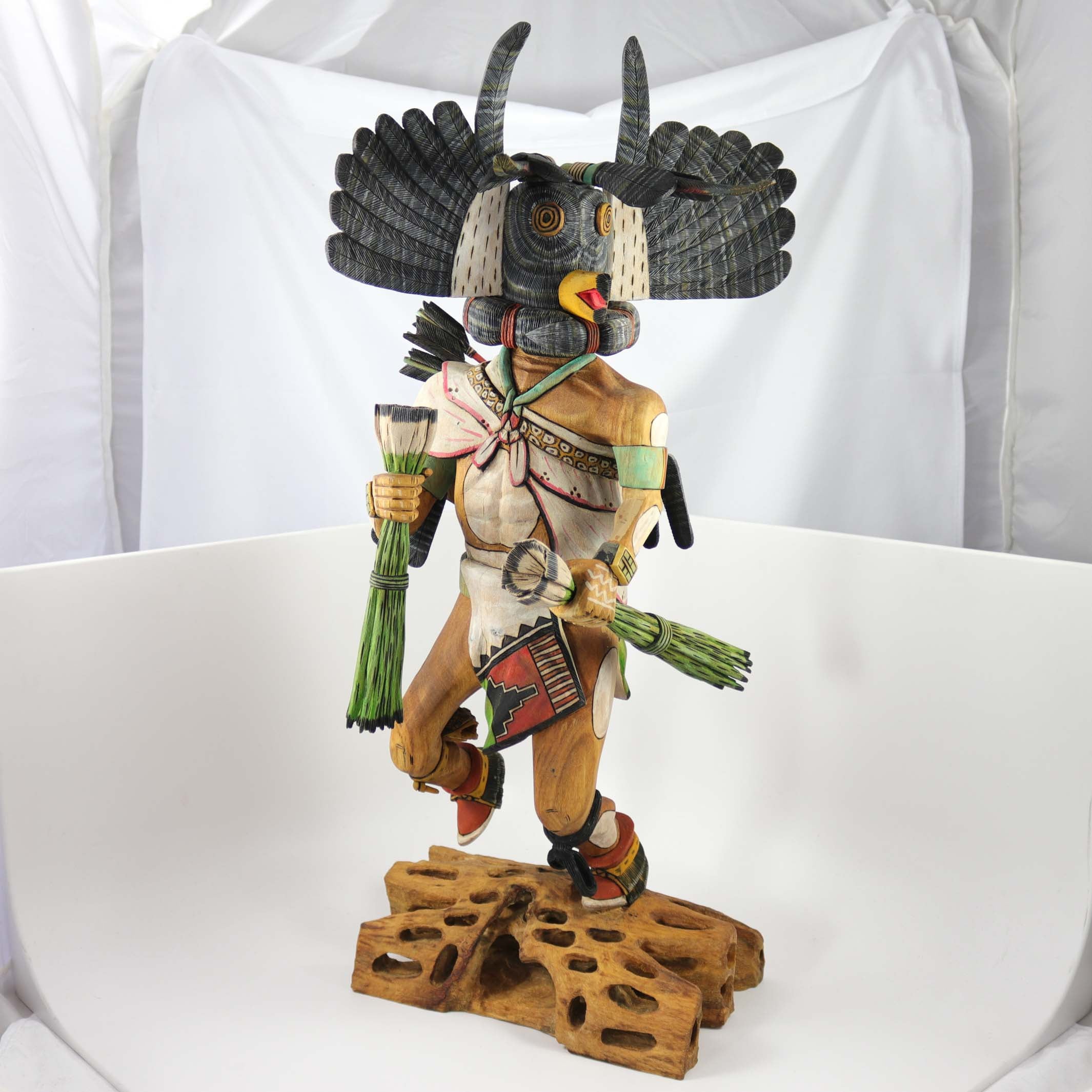The Enchanting History of Zuni Fetish Necklaces: A Journey Through Time and Tradition
The Zuni People and Their Cultural Legacy
The Zuni people are one of the 19 Pueblo tribes in the southwestern United States, primarily residing in New Mexico. They have a long and distinguished history of artistry, with expertise in pottery, silversmithing, and carving. Among their most renowned artistic creations are their fetish carvings, which hold significant spiritual value and are used for ceremonial purposes.
Understanding Zuni Fetishes
 In Zuni culture, a fetish is a small, carefully carved animal or figure that embodies the spirit of the animal or natural force it represents. These carvings are believed to hold special powers and are used in various rituals, ceremonies, and as protective talismans. The Zuni people believe that each fetish carries its own unique set of attributes and can aid its owner in different ways, such as providing guidance, protection, or healing. Shop Zuni Fetishes here.
In Zuni culture, a fetish is a small, carefully carved animal or figure that embodies the spirit of the animal or natural force it represents. These carvings are believed to hold special powers and are used in various rituals, ceremonies, and as protective talismans. The Zuni people believe that each fetish carries its own unique set of attributes and can aid its owner in different ways, such as providing guidance, protection, or healing. Shop Zuni Fetishes here.
Zuni Fetish Necklaces: A Symbol of Unity and Spirituality
Zuni fetish necklaces are a beautiful and meaningful representation of Zuni spirituality, combining artistry and symbolism in an exquisite piece of wearable art. These necklaces are typically made by stringing multiple fetish carvings together on a single strand, often interspersed with beads made from materials such as shell, turquoise, or coral. The resulting piece is a stunning, one-of-a-kind creation that serves both as a statement piece and a powerful symbol of the interconnectedness of all living things.
The History and Evolution of Zuni Fetish Necklaces
Zuni fetish necklaces have been crafted for centuries, with the earliest known examples dating back to the Ancestral Puebloans (Anasazi) who inhabited the region around 1000 A.D. These early necklaces featured simple animal carvings made from materials such as shell, turquoise, and bone.
Over time, the art of Zuni fetish necklace making has evolved, with contemporary artists incorporating intricate details, diverse materials, and innovative techniques. Today, Zuni fetish necklaces are highly sought after by collectors and enthusiasts for their beauty, craftsmanship, and cultural significance.
Key Aspects of Zuni Fetish Necklace Artistry
-
Material selection: Zuni fetish necklaces are made from a variety of materials, including semi-precious stones, shells, and wood. Some of the most commonly used materials include turquoise, jet, serpentine, and mother-of-pearl.
-
Carving techniques: Zuni fetish carvings showcase remarkable skill and attention to detail. Artists use both traditional and modern tools to create intricate, lifelike animal figures, often with exceptional realism and fluidity.
-
Symbolism: Each animal fetish used in a Zuni necklace carries its own unique symbolism, based on the Zuni people's spiritual beliefs and their relationship with the natural world. For example, the bear symbolizes strength and introspection, while the eagle represents vision and spiritual guidance. Learn more about common Zuni Fetish carvings and their meanings here.
-
Design and composition: A Zuni fetish necklace is carefully designed to harmoniously blend the various fetishes and beads, creating a visually striking piece that carries the spiritual energy of each individual carving.
Conclusion
Zuni fetish necklaces are a captivating fusion of artistry, spirituality, and history, offering a unique and meaningful way to connect with the rich cultural heritage of the Zuni people. These enchanting pieces of wearable art are not only visually stunning but also hold deep symbolic significance, making them cherished treasures for collectors and admirers alike.
By exploring the history, craftsmanship, and symbolism behind Zuni fetish necklaces, we gain a deeper appreciation for the creativity, skill, and spiritual beliefs of the Zuni people. As we wear and admire these exquisite necklaces, we are reminded of the interconnectedness of all living things and the power of art to inspire, heal, and connect us to our ancestral roots.
In today's fast-paced world, Zuni fetish necklaces serve as a beautiful reminder of the importance of honoring tradition, respecting the natural world, and embracing the spiritual wisdom of ancient cultures. Whether you are a long-time collector or new to the world of Native American art, the captivating history and enchanting beauty of Zuni fetish necklaces are sure to leave a lasting impression.





I don’t even know how I ended up on your website but it is been a joy I am originally from Grants New Mexico and we moved away when I was young in the sixth grade my dad was an underground Hard Rock m i n e r and we went from New Mexico to Colorado and ended up in South Dakota and so I’m very familiar with certain styles of jewelry and own some pieces of jewelry that either I’ve had since I was a child or acquired from relatives over the years both my sister and I also acquired some of our mothers jewelry after she passed away and seeing some of the Zuni fetish necklaces and a lot of the cuff bracelets Zuni Navajo and you name it it just has been a wonderful experience and I learned a lot of things that I’ve never knew my whole entire life so I just wanted to share that thank you so much for educating people with different tribes different turquoise mines different styles Etc it is just been a joy and I am going to put your site on my homepage on my phone so I can share it with my sister again thank you this is been just awesome too go back in time and reminisce and to learn about things I just never was taught when I was younger or never knew of thank you
Leave a comment